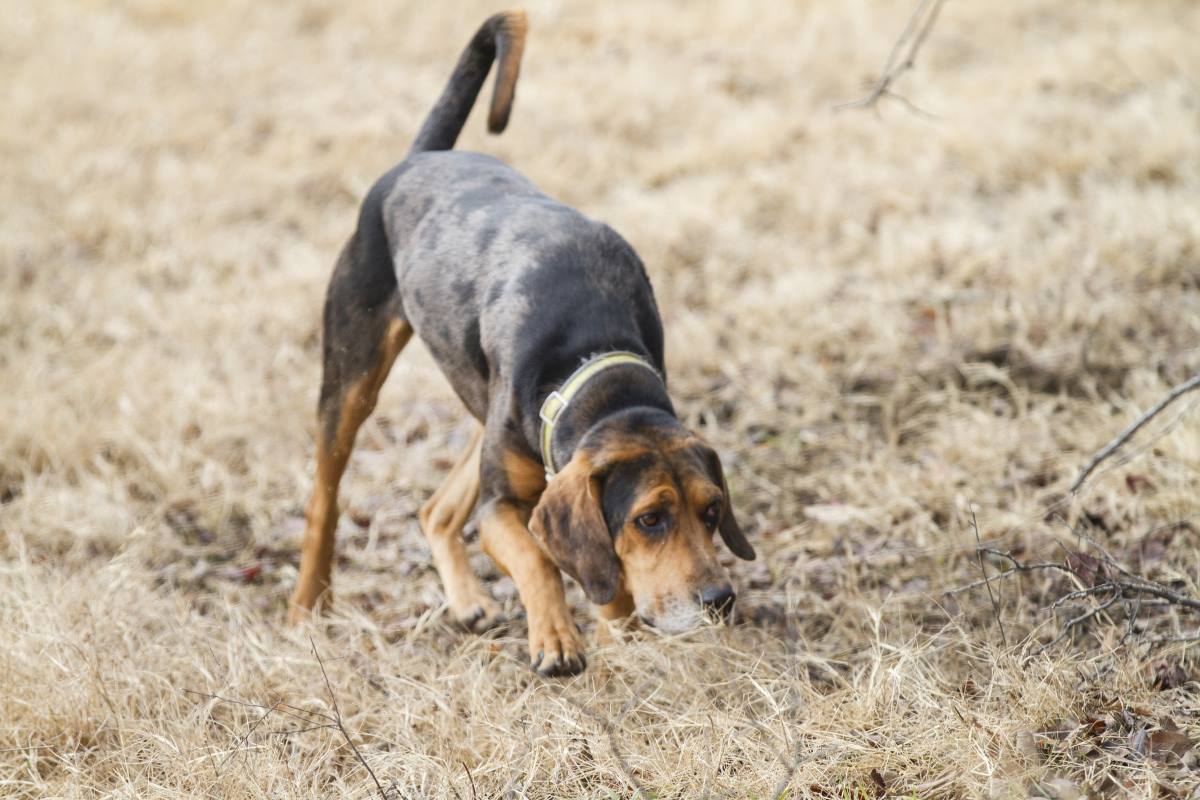Training Your Dog to Blood-Trail Deer

Training Your Dog to Blood-Trail Deer
If you’re a deer hunter, you know the feeling of not finding a deer. Sometimes the shot is fatal, but the deer has superpowers, and they journey way beyond where they should have expired. There is a chance, the cover and terrain can mislead you or make it seem impossible to follow a blood trail. Sometimes the shot isn’t fatal, but you need confirmation. No matter the circumstances, not recovering a deer is a feeling that responsible outdoor enthusiasts hate experiencing.
Most hunting dogs will make good blood tracking dogs. Sure, some dogs will likely train faster, and others will likely be more proficient due to their breed and pedigree. Nonetheless, if you have a hunting dog, you’re well on your way to having a deer tracker.
Is It Legal?
Currently, 43 of the 50 states allow hunters to use dogs to locate wounded or dead deer. The seven states that currently prohibit the use of dogs are Arizona, Connecticut, Massachusetts, Nevada, Oregon, Rhode Island, and Washington. Some of the regulations vary from state to state, so make sure to check the regulations for the state(s) you plan to hunt in.
For roughly the first two weeks of their life, a dog is blind and deaf. It’s no wonder that their noses are so keen. Scientists estimate that a dog’s sense of smell is up to 100,000 times more sensitive than a human’s sense of smell. I think most of us would be motivated to train our dogs to blood trail if the data informed us that our dog’s sense of smell was 100 times more powerful than ours. It kind of seems silly not to train our dogs to blood trail, given the added benefit of being able to capitalize on their superpowers to find closer at the end of a trail.
How Do We Train?
First and foremost, our dogs need to have a solid foundation before we introduce them to tracking. If they don’t mind commands like “sit”, “here”, and “heal”, they aren’t ready to be cut loose on a track.
After they have a solid foundation, we can start doing short tracking drills with a rope dipped in blood or a piece of deer cape or a squirt bottle to spray or drip scent along a trail, or we can drag a beef liver. Most lockers will sell beef liver to drag and leave at the end of the trail. There are various companies that sell blood tracking scents and tools that are helpful for training.
As we begin, our tracks need to be shorter and straighter. Over time, we can lengthen our track, add twists and turns, use the distractions of 90-degree turns, creeks, downed trees, open fields, and ditches.
Any time we lay a blood track, we need to walk all over the trail we set and mark more of the terrain with our scent. We want to make sure our dog is keyed in on the blood scent and not just following our scent.
Before we set our dog on the trail and give them their search command, we need to hook a check cord to their collar so we can stay with them, keeping an eye on them and seeing how their behavior changes when they get hot and cold on the trail.
Having a reward for our dog at the end of the trail is key. The reward can be a chunk of liver, a deer leg, or a piece of deer cape. We need to celebrate them when they find the end of the trail. They need to know they did what we wanted them to do.
As our training progresses, we should have a goal for our dog to work a “cold trail” that’s been sitting for 24-plus hours. Our training will build up to here by having our dog move from fresh scent to more and more hours-old scent.
We should consider training two to three times a week, but not so much that our dog gets burnt out and doesn’t want to do it. Another thing we should consider is training at night every once in a while, so our dog can be familiar with working at night and the various tools like flashlights and spotlights.
Finally, we need to take advantage of the real thing. Whether it’s our deer or a buddy’s deer, we should take our dog out on the recovery, ESPECIALLY WHEN we know where the deer is lying. No other training scenario we set up for them will beat the real trail of a real deer.
By Kyle Dana
October 2025
Here is last months Gundog Corner
Or if you are looking for the digital version of this months issue here it is below
Looking for the Cattle/Dairy side of things

